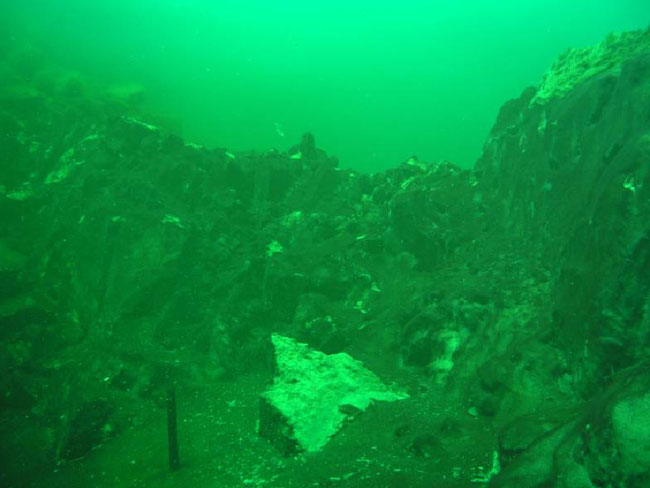Odd Life Found in Great Lakes

Scientists have found some odd life forms in Lake Huron.
Peculiar geological formations are supporting floating plumes and purple mats of microbes dwelling in enclaves of the Great Lake, researchers report. The odd biology is more akin to what is found in some of Earth's most extreme environments.
The mats are located about 66 feet (20 meters) below the surface of Lake Huron — the third largest of North America's Great Lakes — where researchers have found sinkholes made by water dissolving parts of an ancient underlying seabed.
Around these sinkholes are brilliant purple mats of cyanobacteria — cousins of microbes found at the bottoms of permanently ice-covered lakes in Antarctica — and pallid, floating ponytails of other microbial life. The water there is dense, oxygen-free and salty, and therefore hostile to most familiar, larger forms of life in the lakes.
The scientists report that some deep sinkholes act as catch basins for dead and decaying plant and animal matter and collect a soft black sludge of sediment topped by a bacterial film.
These environments are also similar to those around deep-sea hydrothermal vents and cold seeps, where many odd forms of life have also been found.
In the oxygen-depleted water, cyanobacteria carry out photosynthesis using sulfur compounds rather than water and give off hydrogen sulfide, the smelly rotten-egg gas. Where the sinkholes are deeper still and light fails, microorganisms use chemical means rather than photosynthesis to metabolize the sulfurous nutrients.
Sign up for the Live Science daily newsletter now
Get the world’s most fascinating discoveries delivered straight to your inbox.
Groundwater beneath Lake Huron is dissolving minerals from the defunct seabed and carrying them into the lake to form these exotic, extreme environments, said Bopaiah A. Biddanda of Grand Valley State University, in Muskegon, Mich. Biddanda is one of the leaders of the study of these odd environments.
"You have this pristine fresh water lake that has what amounts to materials from 400 million years ago ... being pushed out into the lake," said team co-leader Steven A. Ruberg of the Great Lakes Environmental Research Laboratory of the National Oceanic and Atmospheric Administration (NOAA).
Biddanda, Ruberg and their colleagues are trying to understand how long ago the minerals were deposited that are now entering the lake and how fast the salty brew containing them is arriving.
The work, described in Eos, a weekly newsletter put out by the American Geophysical Union, "might also lead to the discovery of novel organisms and previously unknown biochemical processes, furthering our exploration of life on Earth," Biddanda said.
- Video: Under Antarctic Ice
- Wild Things: The Most Extreme Creatures
- Images: Alien Life of the Antarctic










